Ideal Settings
Herman Miller's Living Office provides people with a variety of Settings—spaces optimized to support work and interaction. Each of the 10 Settings are distinct in purpose, scale, and sociability. The right mix can foster an office landscape where people can immediately grasp where they can go and what they can do to achieve their goals.Designing a Living Office Landscape is a lot like cooking a complex dish, or at least that’s how Lori Gee, Herman Miller’s Vice President of Applied Insight sees it. “Herman Miller’s Settings are spatial recipes,” she says. “They attend to the cognitive, social, behavioral, and physical needs identified by the Modes of Work—a range of activities people engage in, no matter what they do or where they work.”
As any good cook makes a recipe unique by flavoring it to her own taste, so too can an organization customize the Settings to reflect its culture, identity, and aspirations. Says Greg Parsons, Vice President of Landscape Environments, “A workplace with the right mix of Settings, tailored to the character and purpose of the organization, sets people free to realize their potential. It enriches everyone’s experiences and improves performance.” In this type of environment, people can do their best, and both individuals and the organization can prosper.
Each of the following 10 Settings can be adapted and combined to create an office landscape that enables and empowers its inhabitants by providing choice and fostering community.
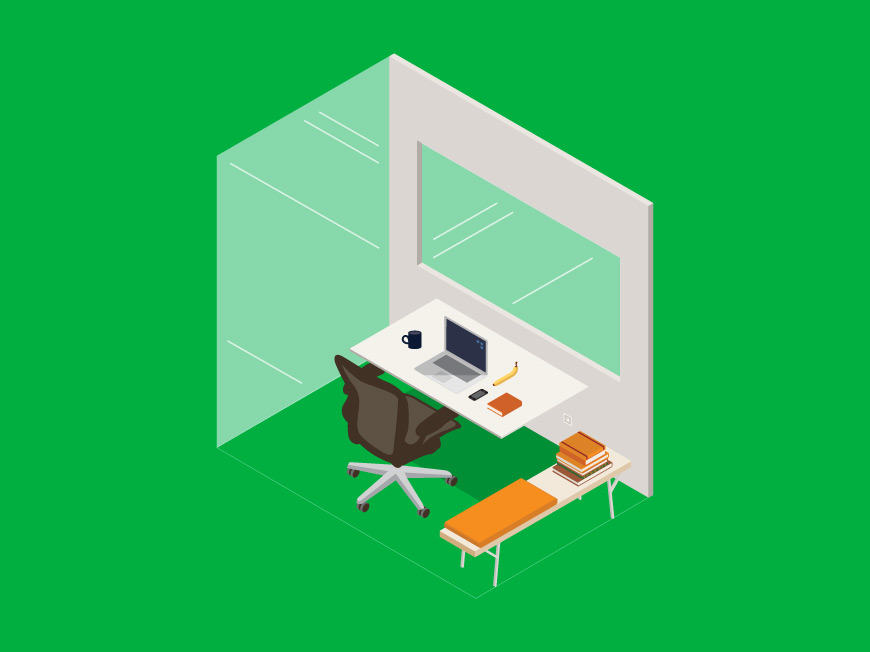
Haven
A Haven is a small shelter where focused work can be done without distraction—or alternatively, a place to unwind. It can be an enclosed room, such as a private office, or a semi-sheltered or screened-in space out in the open. Depending on its intended use, the Setting may offer a work surface and ergonomic seating or take on a more relaxed feel. It should also easily accommodate the use of personal technology and other tools. A shared Haven must be easily locatable in the landscape.
Modes of Work
Create
Contemplate
Converse
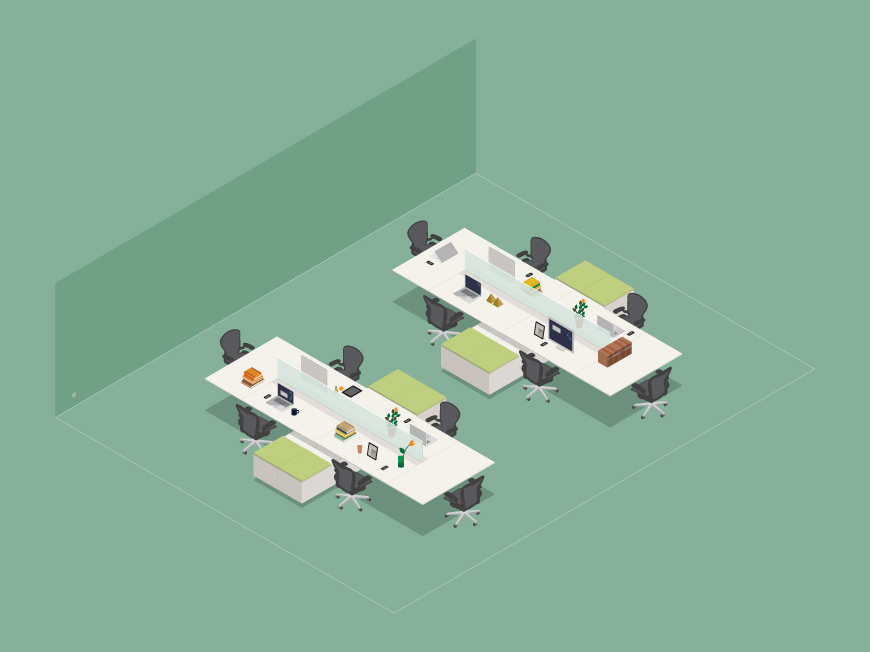
Hive
A Hive is a space where numerous people can do a diverse range of work harmoniously. The Setting offers a grouping of individual work points and ergonomic seating. Variances in spatial division, storage density, and boundary define the character of the space and help nurture the diverse types of work that occur there. Further ergonomic considerations may include the optimal placement of fixed and adjustable technology.
Modes of Work
Process & Respond
Create
Chat
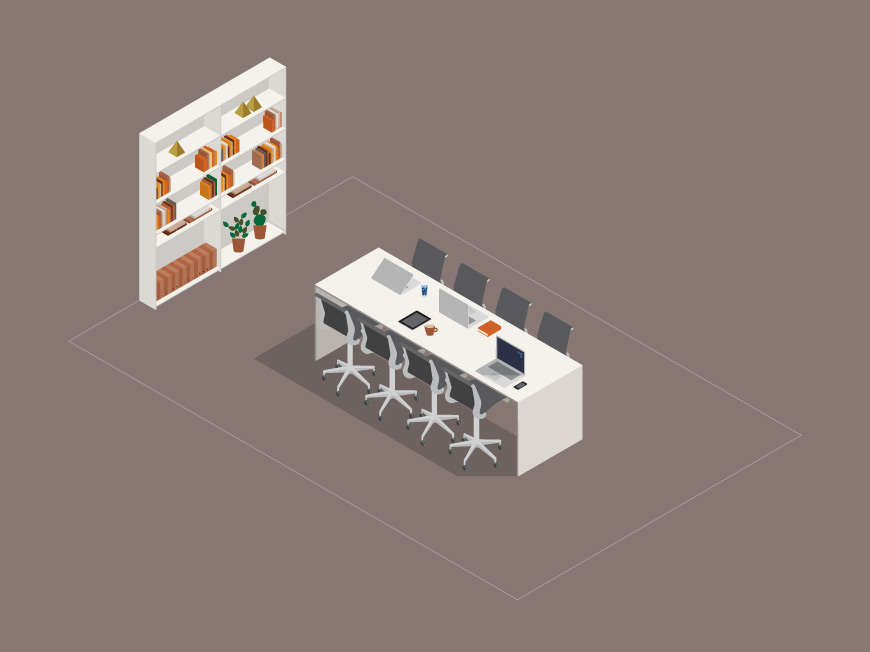
Jump Space
A Jump Space consists of highly usable work points that facilitate temporary work between other activities. For this reason they tend to be located along highly trafficked routes, or adjacent to busy intersections within the landscape. A Jump Space may help connect people from disparate locations or teams who otherwise would not meet. It can be configured with comfortable seating and with bar- or table-height surfaces.
Modes of Work
Process & Respond
Chat
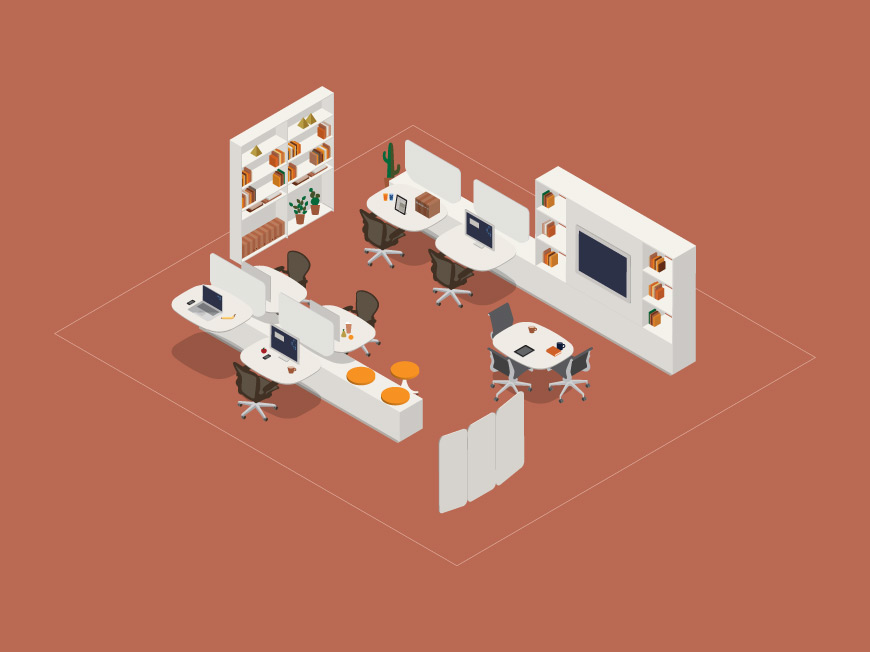
Clubhouse
A Clubhouse is a working neighborhood that generally belongs to a team assigned to a specific, long-term project. A variety of individual and group work points with ergonomic seating enable people to freely and intuitively cycle between tasks and activities as they use a variety of fixed, mobile, personal, and remote technology. Maintaining proximity and the identity of the team within the Clubhouse helps drive the work that occurs there. A Clubhouse should offer ample surfaces to display and share in-process work. This Setting has defined edges with porosity for visual access.
Modes of Work
Co-create
Divide & Conquer
Huddle
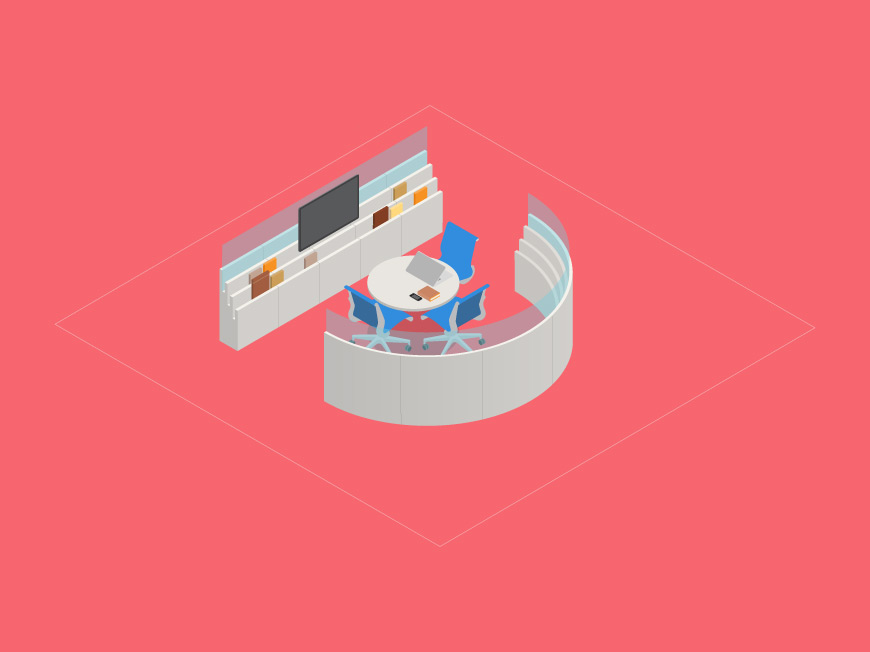
Cove
A Cove is a compact space within proximity to individual work points or common areas that enables people to assemble and engage with each other for a short period of time. A Cove may also accommodate remote participants with provisions for fixed and personal technology. Enough boundary to avoid disrupting others is essential—especially with the addition of technology. Territorial by nature, Coves are used more readily by the people working nearest to them.
Modes of Work
Huddle
Converse
Co-create
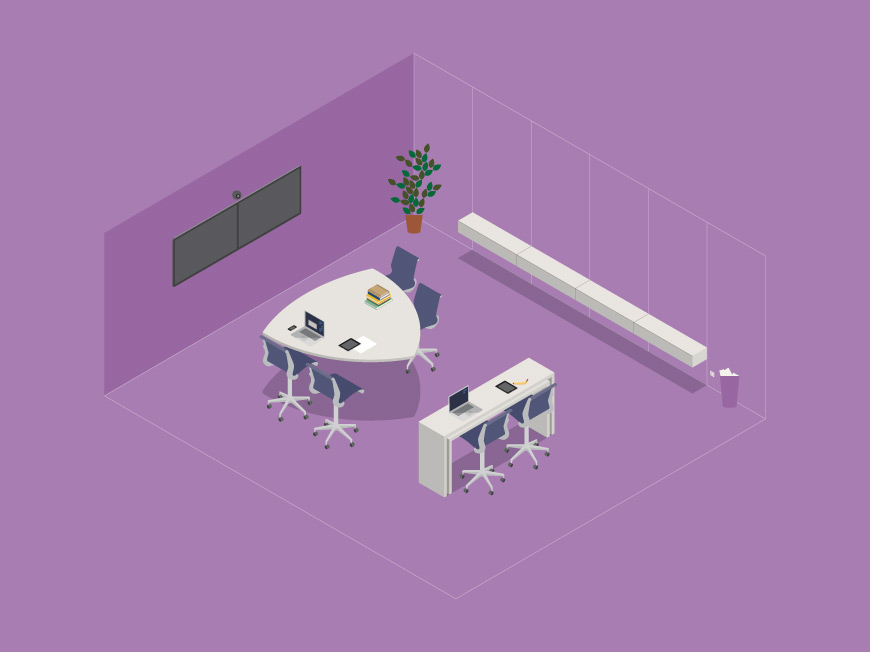
Meeting Space
A Meeting Space is designed to support information sharing—whether it’s a single speaker at the head of the room, or a group of peers conversing among themselves. For this reason, a Meeting Space requires great lines of sight for everyone, including remote participants. Vertical display surfaces encourage ideation and interaction. Adequate perimeter space enables circulation and frees movement in this enclosed Setting.
Modes of Work
Show & Tell
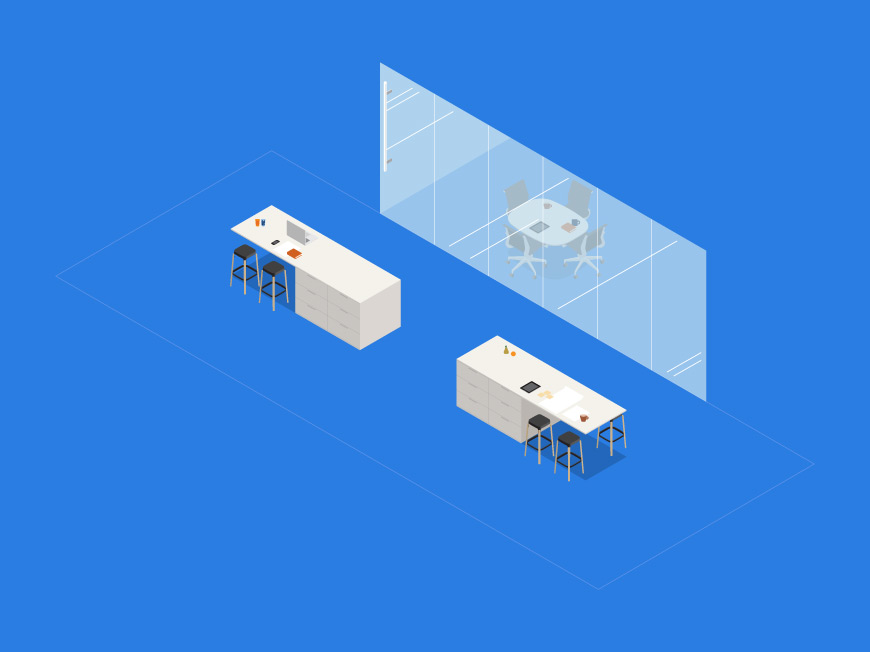
Landing
A Landing is an open perching spot adjacent to Meeting Spaces or Forums. Prior to a meeting it provides a gathering space for attendees. After, it takes advantage of the visual continuity between the landing and its contiguous meeting space as an aid to contextual memory, and helps drive the work that happens in this Setting. Accommodations that welcome a brief gathering drive the utility of each Landing.
Modes of Work
Warm Up, Cool Down
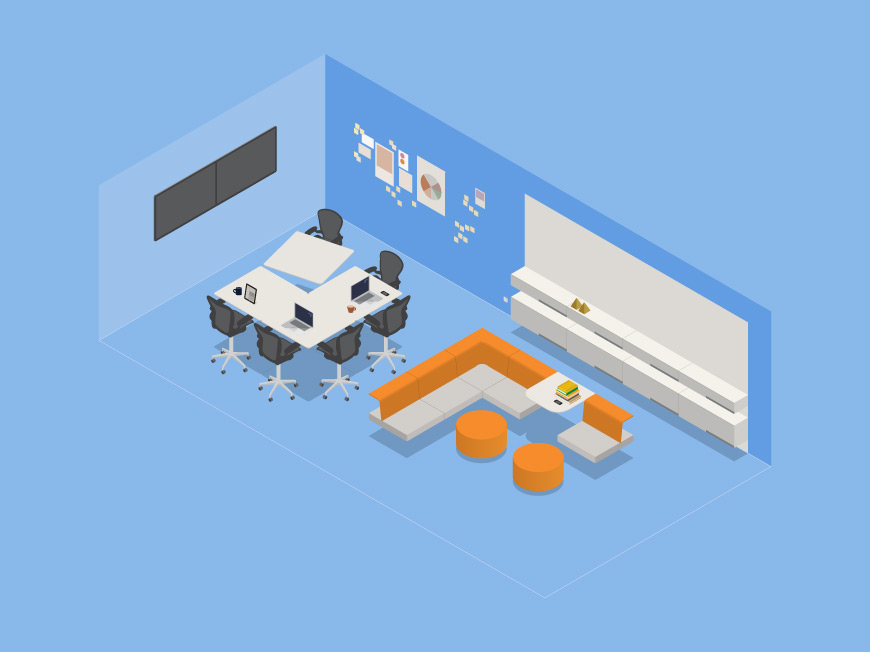
Workshop
A Workshop is the ideal Setting for people to work together to generate new ideas and drive their work forward. It offers easy access to analog and digital tools and surfaces to display and create work. People should always be able to see and hear each other easily—even when not physically present. A variety of postures and distinct groupings of mobile furniture allow people to choose and arrange how the space best suits their work in the moment. Adequate circulation space encourages movement.
Modes of Work
Co-create
Divide & Conquer
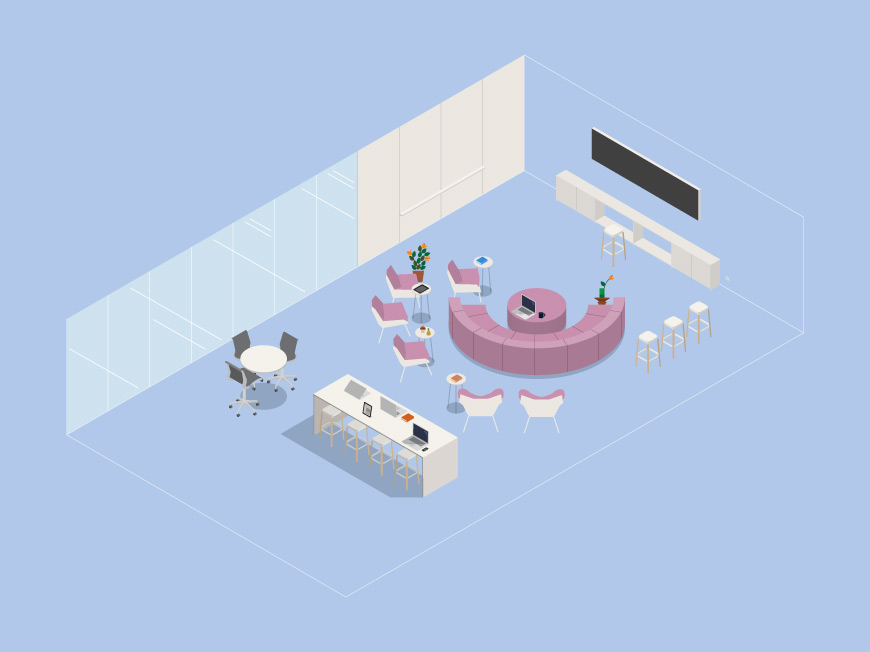
Forum
A Forum is designed to support the presentation of content. This is enabled by a clearly defined point of focus in the space, which tends to be architecturally enclosed. Critical elements include a good line of sight for everyone in the audience, excellent sound and lighting, and the capacity to engage remote participants. A variety of furniture selections may be provided, and it should be repositionable to best suit each presentation and audience.
Modes of Work
Show & Tell
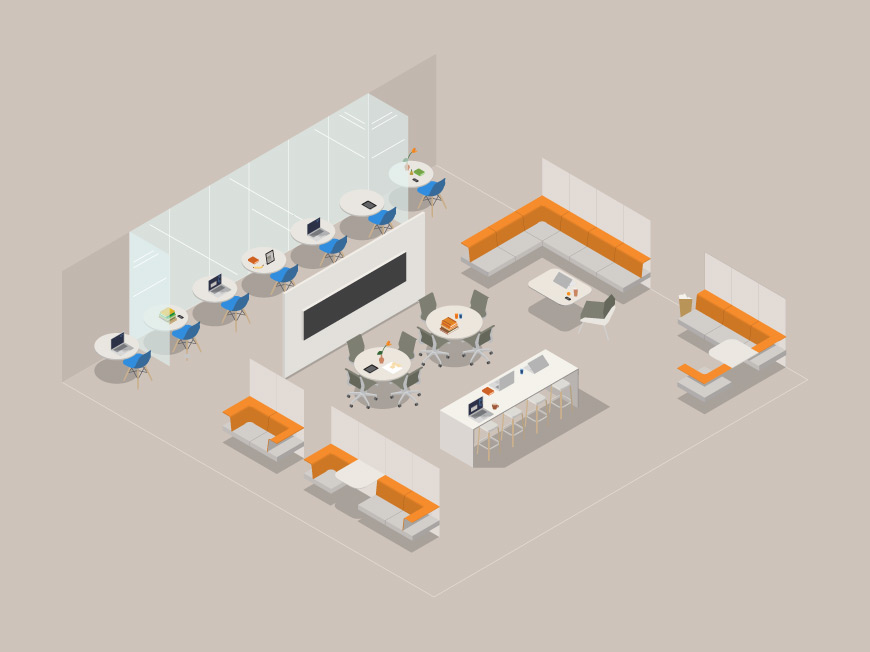
Plaza
A Plaza acts as the vibrant and dynamic heart of the landscape—a place where people can intuitively take the pulse of the organization. They are open, welcoming, public spaces situated at major intersections and highly trafficked areas of the work environment. They support a diverse range of experiences and populations. A Plaza encourages mixing and mingling, enables multiple work activities simultaneously, helps broadcast information, and provides amenities as a point of attraction.
Company Informations:
Le Office Furniture Manufacturer
www.letbackrest.com
Address: No.12, Nanhua Road, LongJiang ,Shunde,Foshan, Guangdong, China (Mainland)
Email: sale@letbackrest.com
skype: kinmai2008
Modes of Work
Chat
Converse
Process & Respond

